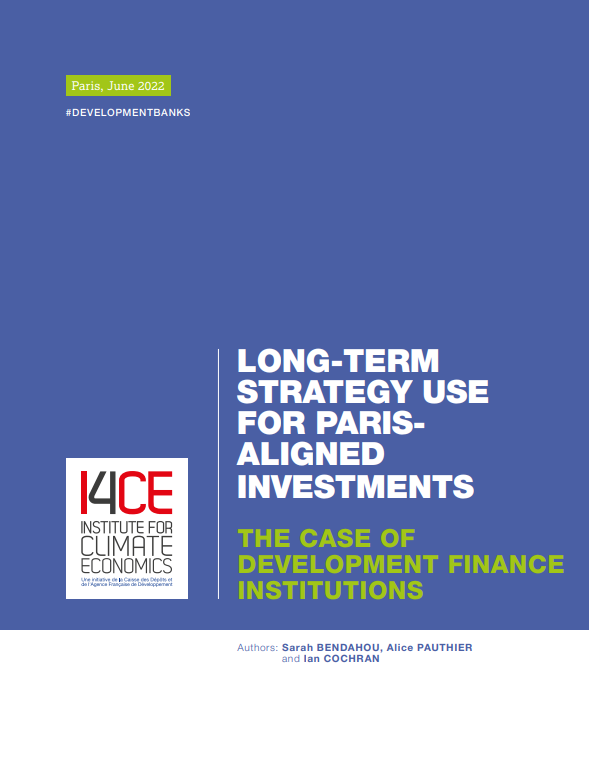Long-term strategy use for Paris-aligned investments
This I4CE report focuses on the role of countries’ Long-Term Strategies (LTSs) in the Paris alignment approaches of Development Finance Institutions (DFIs). It explores the possible roles of both the LTS development process and the resulting LTS document in providing insights on the Paris alignment of investments within investment decision-making processes. The findings are relevant for a broader range of financial institutions. More and more development finance institutions are committing to aligning with the Paris Agreement and are using different approaches and benchmarks to determine whether their investments would be aligned with the Paris Agreement goals. As the transition towards low-greenhouse gas climate-resilient development will be specific to each country, these institutions are increasingly exploring the use of countries’ long-term strategies (LTSs) as they seek to implement Paris-aligned investment strategies.
Growing expectations that long-term strategies will help to determine the Paris alignment of financial flows
Although LTSs are voluntary at present, the Glasgow Climate Pact adopted at COP26 in 2021 urges Parties to communicate them and to update them regularly. It is expected that their number will continue to grow, that their quality will improve, and that such strategies will be increasingly referred to and used by economic actors, and in particular by DFIs. LTSs ideally represent a country-owned long-term vision with the potential to help stakeholders, including DFIs, to better understand the key dimensions of a country’s climate ambitions. For practitioners, LTSs can potentially ensure short-term policies and targets, including nationally determined contributions (NDCs), are consistent with the long-term goals of the Paris Agreement and can help to steer and inform discussions on increasing the long-term level of ambition.
The LTS should be used during upstream DFI country dialogue to support transformative climate outcomes in the country
Initial experience suggests that DFIs should use LTSs and other country-specific inputs as early as possible in the project cycle, including in the identification and design stage, in order to support alignment. Both DFIs and experts have also noted the strong potential of LTSs and their development process to inform the definition of DFI country intervention strategies, and the potential for their use in country dialogue. This potential use of LTSs in country dialogue is even more significant if DFIs support the LTS design process, enabling a deeper understanding of policy discussions and of the aspirations of the different country stakeholders that should be involved in this country-owned process.
DFIs should continue to proactively offer both technical and financial support for the development and operationalisation of robust LTSs
In order for LTSs to fully realise their potential as instruments to increase the overall alignment of internationally financed activities in a country, a number of challenges need to be addressed. Recommendations, applicable to countries and entities developing or supporting LTSs, and to DFIs, have been identified to address these challenges, and are detailed in the last section of this report.
Click on this button to see the image
What are long-term strategies? How can they contribute to aligning with the Paris Agreement? And how can they be useful for public development banks? Sarah Bendahou answers these questions in 2 minutes:

